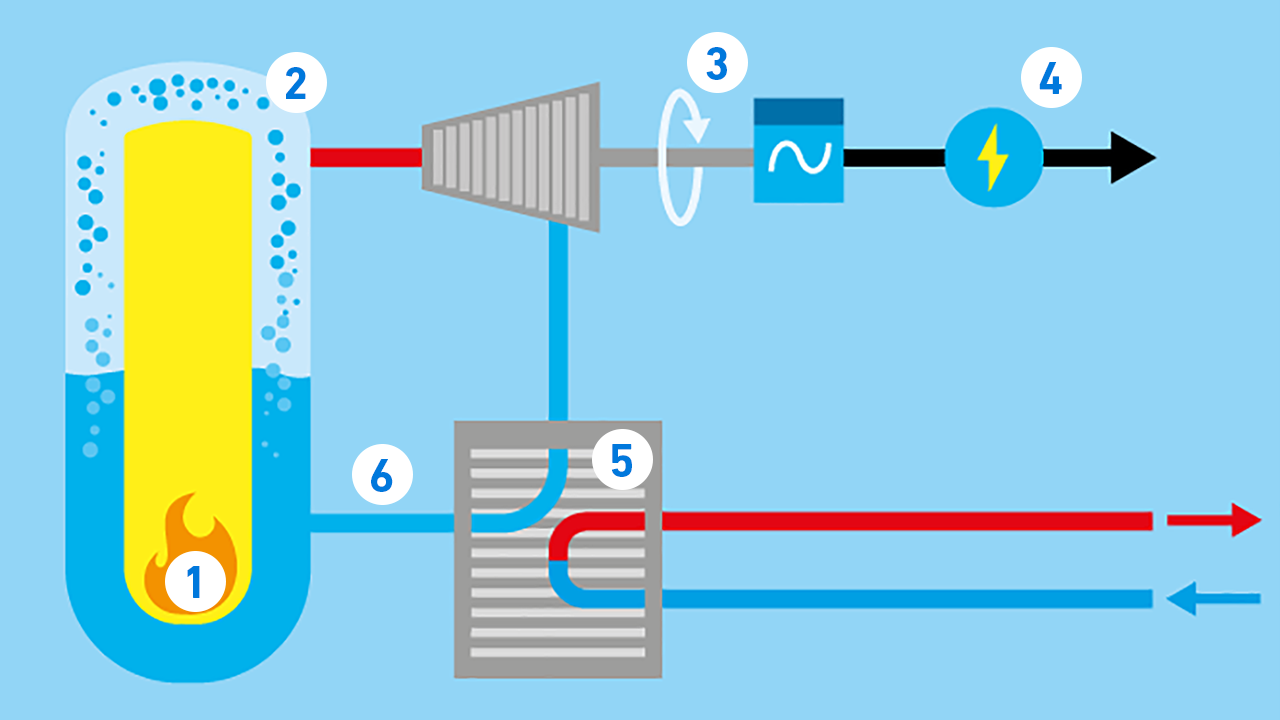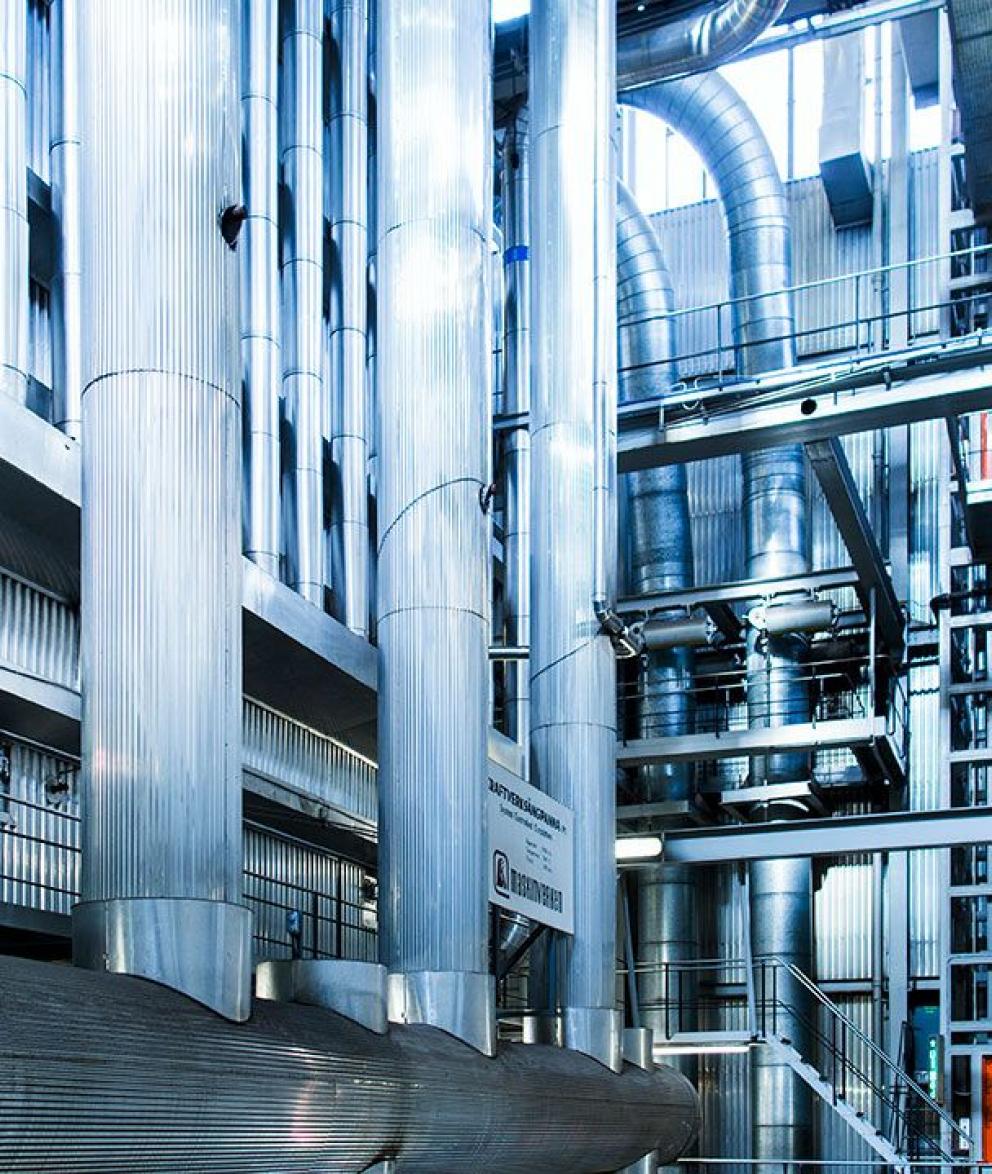Karlshamnsverket is associated with reserve power and has mostly been used as a resource during the winter, when electricity consumption increases. But now the facility needs to support the electricity system more often during the summer, when nuclear power plants are undergoing their annual maintenance outages. Fewer reactors increases the need for dispatchable electricity generation.
Electricity generation at Karlshamnsverket
Karlshamnsverket’s central components comprise a boiler, turbines and a generator.

1. Oil is burned in the boiler
2. Heat from the burning oil turns the water in the boiler to steam
3. The steam drives the turbines and, in turn, a shaft that drives a generator that produces electricity
4. The generator feeds electricity to the electricity grid
5. Water from the sea cools the steam to water again in the condenser
6. The water is returned to the boiler to become steam again
The history of Karlshamnsverket
1956. When Karlshamnsverket was planned and built, demand for electricity in Sweden was steadily rising. Given this, in the middle of construction of Öresundsverket in Malmö in 1956, Sydsvenska Kraftaktiebolaget (now Sydkraft) decided to plan for additional expansion of its production. The choice was between thermal power (coal- or oil-burning power plants) and nuclear power, since there were limited opportunities for building new hydropower plants. The choice fell on an oil-burning plant, but immediately after the decision was made to build Karlshamnsverket, plans also began for building Sweden’s nuclear power plants.
The estimated service life when the power plant was built was 3,000 hours/year (a year has a total of 8,760 hours). The power plant was intended as a complement to nuclear power and would produce electricity when most needed, meaning primarily on weekdays and only rarely on weekends, evenings and nights. But that never happened. During the first year there was significant need for electricity in Sweden and right from the start, Karlshamnsverket produced more electricity than originally intended.
1969. Block 1 finished.
1971. Block 2 finished.
1973. Block 3 finished. The power station’s total capacity at this point was about 1,000 MW.
1974. Over 4 TWh (terawatt hours) of electricity is produced, which is still record production even today.
As the nuclear power plants went into operation and oil became increasingly expensive, Karlshamnsverket transitioned to its current role, as a peak and reserve power plant.
2015. Block 1 closed.
Today. The total capacity is approximately 662 MW.
Find out more
We work deliberately and systematically with all kinds of environmental issues that are relevant for our operations.
The laboratory at Karlshamnsverket conducts analyses for Uniper as well as external customers.
Uniper operates a range of assets in Sweden, we have production facilities around the country for fossil-free hydropower and nuclear power, as well as the Nordic region's largest peak and reserve power.



